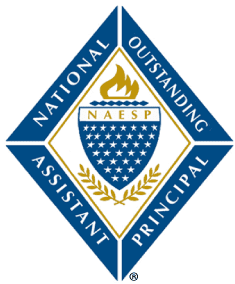
Stacy N. Kawamura
Waikele Elementary School
Waipahu, Hawaii
stacy.kawamura@k12.hi.is
Best Practices
Principals are visionary. They provide the focus, the goals, and the mission for the school. Effective assistant principals operationalize that vision. They create the path that enables the school team to achieve those goals. As assistant principal, I have found that some of the best practices seem basic, but are so important in creating a respectful and collaborative school culture amongst colleagues, students, and families. These practices focus on the people in the building and developing positive relationships in order to foster an environment that supports the hard work of educating our children.
1) Welcome Back: Class Introductions & Expectations At the beginning of the new school year, I make an appointment and reserve time in every classroom to welcome the students back, reintroduce myself to them, and go over our school’s behavioral expectations, otherwise known as the “Take Cares.” While this could just as easily be done at a school-wide welcome back assembly and would get the word out much faster, taking the time to address the students in their classroom allows me an opportunity to reconnect with our returning students, as well as meet the students who are new to the school. The small setting gives me the flexibility to manage and individualize each session based on the ages of the students in the class. I leave each room knowing that I have connected with the students and have communicated several important ideas:
- That my main job is to keep them safe while they are in school and to support the teachers in creating a space where all students can learn.
- That each and every one of them is important and I show them that by working hard to learn everyone’s name.
- That the students also have responsibilities. They need to work hard and do their best to learn. They also need to respect their friends’ space to learn, so if a choice they make interrupts their learning or their friend’s learning, I will step in to remind them of their responsibilities.
This meeting at the beginning of the year also helps throughout the year when students are sent to the office for a disciplinary referral because I remind them of what we talked about and they usually remember and take responsibility very quickly. I am very proud to say that I know every one of the 528 students on my campus. I greet them by name every chance that I get. My hope is that it sets a positive tone for the students (and staff!) and demonstrates the importance of being present, recognizing and acknowledging others.
2) As an assistant principal, I take pride in managing and resolving contentious situations with parents, teachers, and staff so they don’t escalate to a level where my principal or area superintendent needs to get involved. In many cases, people become upset when they feel like we are not responding appropriately or quickly enough, or if they believe we are not being completely forthcoming with information.
In my experience, I have found that one way to minimize these issues is to be proactive with regular communication to staff and families, and to acknowledge concerns as soon as they come up, even if more information is required before providing a response to the situation. There are several small, but very specific things that I do to ensure I am communicating information out in a timely manner and getting feedback to gauge how people are feeling about what we are doing or where we are going.
- Weekly Staff Bulletin – This bulletin gives the calendar of events for the week, lunch menu, announcements, information on staff who are off campus for meetings or trainings, and an inspirational quote, joke, or question, to give our faculty and staff motivation and positive vibes for the week. It is an internal document to ensure employees are aware of the plans for the upcoming week.
- Regular check-in conversations with teachers and staff – These are often short conversations before or after school, and oftentimes, about nothing in particular. Being present and engaging in conversation about non-work related things, however, allows for an opportunity to bring up work related topics that they might have questions or concerns about too.
- Mass phone/email messages to families – This is the quickest method of getting information out to parents. We do need to be mindful not to inundate families with information that is not urgent, but in general, families appreciate having more information than less.
- Timely response to concerns – Acknowledging a concern within the workday, or within 24 hours at least, tells the individual that they have been heard and that their concern will be addressed, even if I can’t get to it immediately.
One piece of advice that I received early in my administrative career is a simple three-word mantra that helps me to prioritize my daily work. “People, process, paperwork.” Creating clear processes/procedures/protocols and completing paperwork timely is important assistant principal work, but much of it can be done once the day quiets down. When students, staff, and families are the priority, people feel heard and important, which ultimately leads to better relationships, more trust, and less anger and resentment. Strong personal and working relationships are the foundation for building a school culture and environment that is inclusive, responsive, and conducive to learning. I try to emulate that in all of my daily interactions and these best practices reflect my priorities and experience as a an assistant principal.


